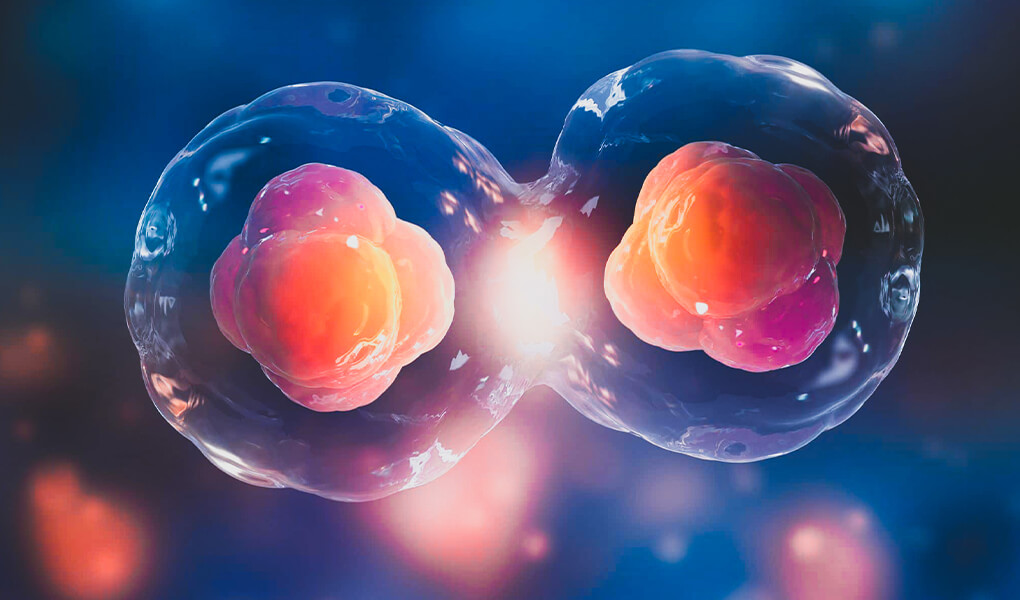Follow Us!
Patient stories, informative videos and much more on our social media accounts

For pregnancy to occur, four compartments consisting of the brain, ovaries, uterus and vagina must be healthy and work in harmony with each other. The egg, which is the female reproductive cell that is thrown into the fallopian tubes after maturation, is fertilized here by the sperm, the male reproductive cell. The fertilized egg that turns into a single cell structure is called a zygote at this stage. The zygote, which consists of 23 chromosomes from the father-to-be and 23 from the mother-to-be, begins to divide rapidly. Thanks to the successive division, the zygote turns into a two-core cell at the end of the 1st day.
The zygote, which turns into an 8-cell structure on the 2nd day and on the 3rd day; It is defined as a blastocyst on the 5th or 6th day following. After all these events in the fallopian tubes, the blastocyst reaches the uterus. During the ovulation period, the sac from which the egg comes out by cracking or the egg follicle, as it is called in medical language, undertakes the release of the estrogen hormone. Estrogen causes the intrauterine wall to thicken every month against possible pregnancy. The blastocyst reaching the uterus attaches to the new vessels formed in the thickened uterine wall. During this period, the situation also called implantation takes place and some expectant mothers may have implantation bleeding, which is one of the first symptoms of pregnancy.
A blastocyst is defined as an embryo after it is attached to the uterus. During 8 weeks after implantation, the baby is in the embryonic period. During this process, cells separate within themselves. The fetal period begins 10 weeks after the embryo development stages are completed, that is, 10 weeks after fertilization. As of the 11th week, the baby is defined as a fetus. Although the baby is defined by different names such as zygote, blastocyst and embryo during the period from fertilization to the fetal period, the baby is also commonly referred to as the embryo during this process.
Embryo development and attachment to the uterus are important stages that occur at the beginning of the pregnancy period. The embryo’s heartbeat starts in the 6th week. In the 9th week, the eyelids, ears and toes are shaped. In the last week of the embryo with webbed fingers before being identified as a fetus, its bones harden and its kidneys begin to produce urine. In this process, the greatest development takes place in the brain of the embryo. Approximately 250,000 new neurons are formed in the embryo’s brain every minute. Frequently asked “Why does embryo development slow down?” or “Why does embryo development stop?” Before the questions “How about embryo development week by week? Must answer the question.
With the effect of LH and FSH hormones secreted from the pituitary gland in the brain, some of the eggs in the ovarian reserve mature and then crack the follicles in which they are located. The healthiest egg is laid in the fallopian tubes where fertilization will take place. While the egg, which is a female reproductive cell, can survive for approximately 24 hours, the sperm cell can remain alive in the female body for 4-5 days. As a result of sexual intercourse in this period, the pregnancy process begins with the fertilization of the egg.
However, the first day of the last menstrual bleeding is considered the beginning of pregnancy in order to calculate the pregnancy more easily and accurately. In IVF treatment applied to couples who cannot conceive naturally, eggs and sperm are combined in a laboratory environment and fertilized. The zygote, which can be described as a type of cell ball, occurs after fertilization. According to the pregnancy calculation, the fertilized egg reaches the uterus through the fallopian tubes at the end of the 4th week or at the end of the 2nd week following fertilization.
In other words, when embryo development is examined week by week, the embryo is formed in the 4th week of pregnancy and the embryo is divided into two this week. The detached part forms the placenta where the baby will continue to develop in the following weeks. By the 6th week, the baby continues to grow rapidly. In other words, when the baby reaches the end of the 6th week, its size increases 3 times compared to the beginning of the 6th week. This week, the first heartbeat of the embryo is heard. In the 7th week, the facial formation of the embryo gains speed. Mouth, ear and nostrils are selectable.
After this week, when the baby moves for the first time, by the 8th week, the embryo has grown 4 times compared to the last two weeks. His heart starts to beat stronger and his eyelids form. Some organs of the embryo begin to form in the 9th week. During this week, the baby’s head is half the size of its body. In the 10th week, the bones of the embryo harden and its kidneys begin to produce urine. After the 10th week, the embryo is called a fetus. Embryo development is the same in the in vitro fertilization method. However, the baby’s zygote and blastocyst stages take place in the laboratory environment. After the process defined as embryo transfer, the embryo attaches to the uterus and continues its normal development as in pregnancies obtained naturally.
Although the slowing or complete arrest of embryo development is mostly seen due to genetic factors, the expectant mother is older than 35 years old, the number of quality eggs may decrease and thus chromosomal defects in the embryo formed. This situation can also be considered as the natural defense mechanism that prevents a baby with a genetic defect from being born. The embryo genome, which can be described as the first cell of human life, is activated when the baby, which is defined as a zygote during the merger of 23 chromosomes from the mother and father, becomes 4 to 8 cells. Failure of genome activation in some embryos can lead to complete arrest of embryo development.
Fertilization and initial cell divisions take place in the fallopian tubes, which act as a kind of channel between the uterus and ovaries. After the blastocyst attaches to the uterus, the baby is defined as an embryo. After the embryo is placed in the uterus, it is divided into two and the placenta is formed where the baby will grow in the uterus. Therefore, the embryo continues its development in the placenta in the uterus. Some of the questions that people planning pregnancy wonder are “How many days does the embryo attach to the uterus?” or “When does the embryo attach to my womb?” in the form.
The zygote that occurs after fertilization divides rapidly and is identified as a blastocyst from day 5 or 6. The blastocyst, which continues to develop in the fallopian tubes, reaches the uterus and attaches to one of the blood vessels it needs to continue its development. After attachment, the blastocyst is now identified as an embryo and the next 8 weeks are considered the embryonic period. While the embryo attaches to the uterus, its symptoms may not be noticed by many people. Implantation bleeding in some people is among the first symptoms of pregnancy. This bleeding occurs much less than menstrual bleeding. Bleeding time is short and its color is darker than normal.
The embryo, which continues its healthy development in the fallopian tubes, cannot hold onto the uterus in some cases. This situation, which leads to the termination of pregnancy, can occur for many different reasons. It is caused by the fact that the endometrium, which is mostly known as the uterine wall, is unresponsive to estrogen hormone release or does not thicken sufficiently due to insufficient estrogen release. In some cases, the embryo may not be able to attach to the uterus due to the shape of the uterine cavity, which is defined as the uterine contour, is not suitable for attachment.
Functional and structural defects in the uterus may prevent the embryo from adhering to the uterus. In addition, in the presence of benign tumors such as polyps and fibroids, the embryo may not adhere to the uterus. Comprehensive examination and different examinations may be required to detect the focus that prevents the embryo from adhering. Frequently asked “Why doesn’t the embryo hold onto my uterus?” The question can be answered in this way.
Let us call you as soon as possible regarding the issues you want to consult.


